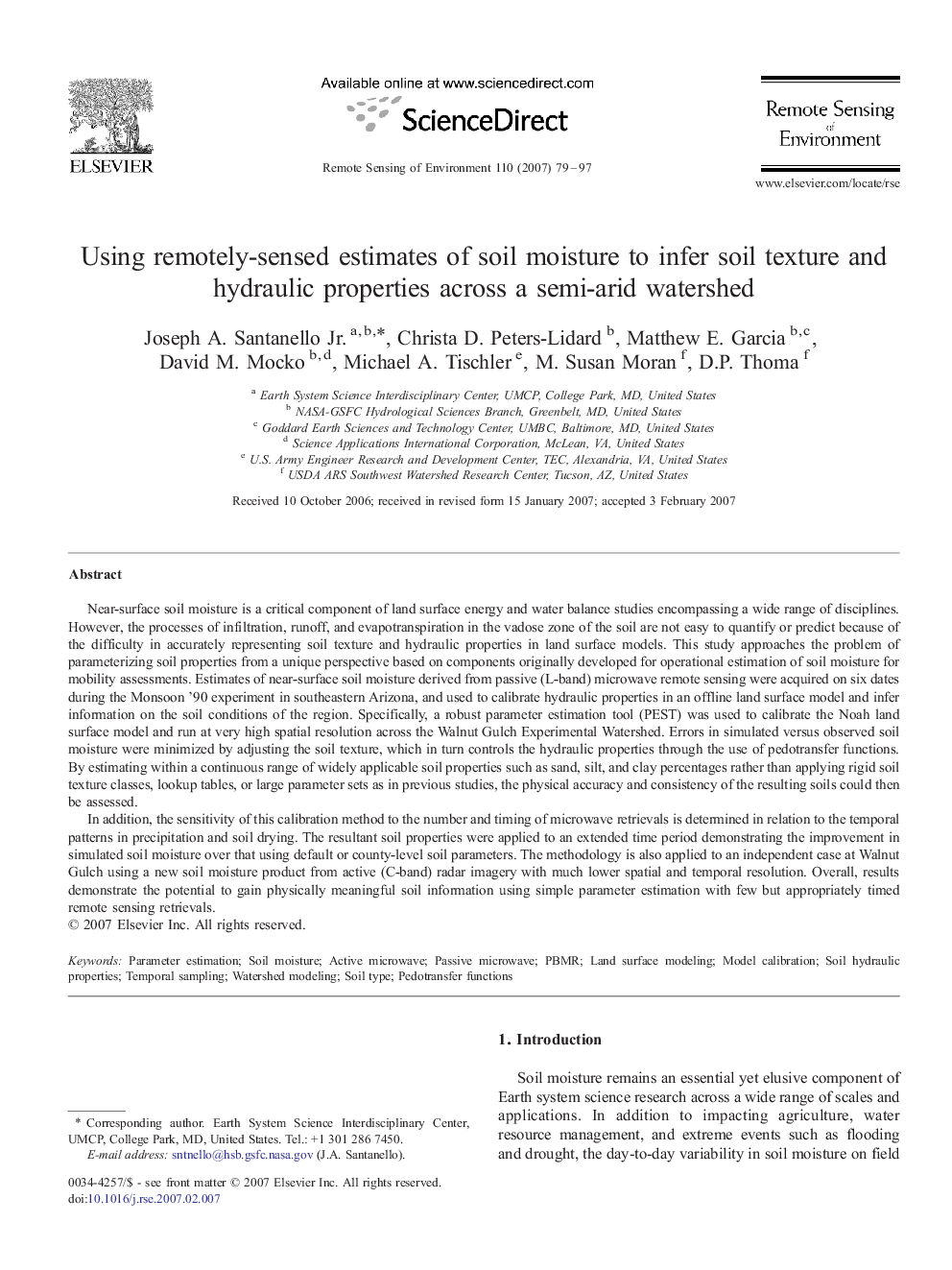| Article ID | Journal | Published Year | Pages | File Type |
|---|---|---|---|---|
| 4460753 | Remote Sensing of Environment | 2007 | 19 Pages |
Near-surface soil moisture is a critical component of land surface energy and water balance studies encompassing a wide range of disciplines. However, the processes of infiltration, runoff, and evapotranspiration in the vadose zone of the soil are not easy to quantify or predict because of the difficulty in accurately representing soil texture and hydraulic properties in land surface models. This study approaches the problem of parameterizing soil properties from a unique perspective based on components originally developed for operational estimation of soil moisture for mobility assessments. Estimates of near-surface soil moisture derived from passive (L-band) microwave remote sensing were acquired on six dates during the Monsoon '90 experiment in southeastern Arizona, and used to calibrate hydraulic properties in an offline land surface model and infer information on the soil conditions of the region. Specifically, a robust parameter estimation tool (PEST) was used to calibrate the Noah land surface model and run at very high spatial resolution across the Walnut Gulch Experimental Watershed. Errors in simulated versus observed soil moisture were minimized by adjusting the soil texture, which in turn controls the hydraulic properties through the use of pedotransfer functions. By estimating within a continuous range of widely applicable soil properties such as sand, silt, and clay percentages rather than applying rigid soil texture classes, lookup tables, or large parameter sets as in previous studies, the physical accuracy and consistency of the resulting soils could then be assessed.In addition, the sensitivity of this calibration method to the number and timing of microwave retrievals is determined in relation to the temporal patterns in precipitation and soil drying. The resultant soil properties were applied to an extended time period demonstrating the improvement in simulated soil moisture over that using default or county-level soil parameters. The methodology is also applied to an independent case at Walnut Gulch using a new soil moisture product from active (C-band) radar imagery with much lower spatial and temporal resolution. Overall, results demonstrate the potential to gain physically meaningful soil information using simple parameter estimation with few but appropriately timed remote sensing retrievals.
